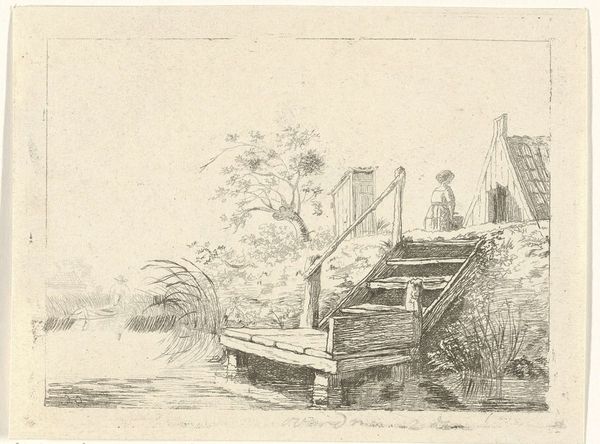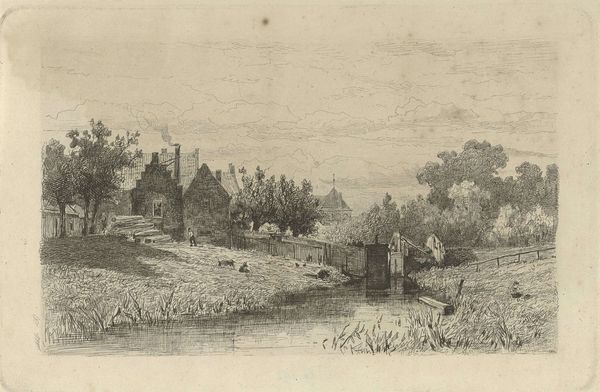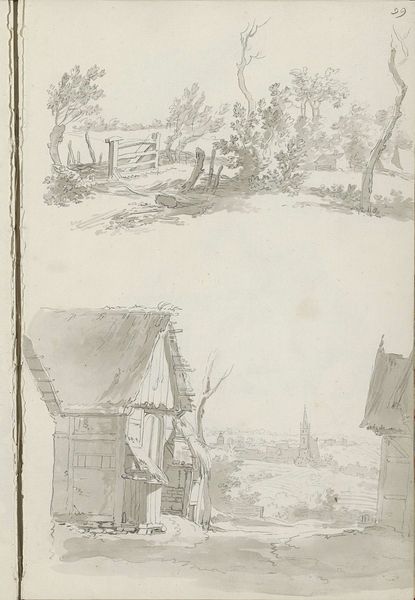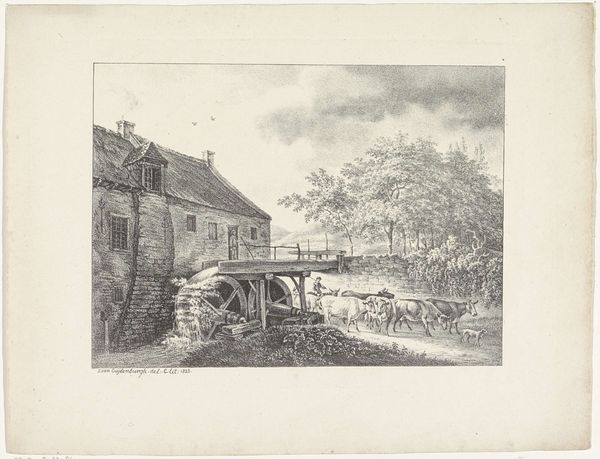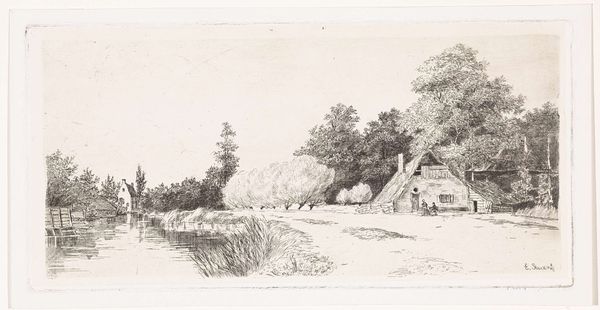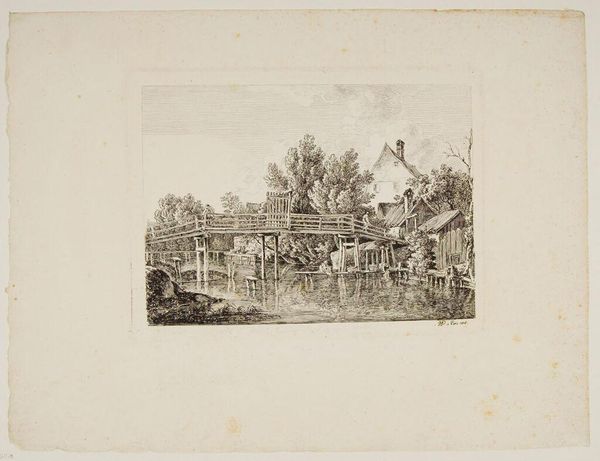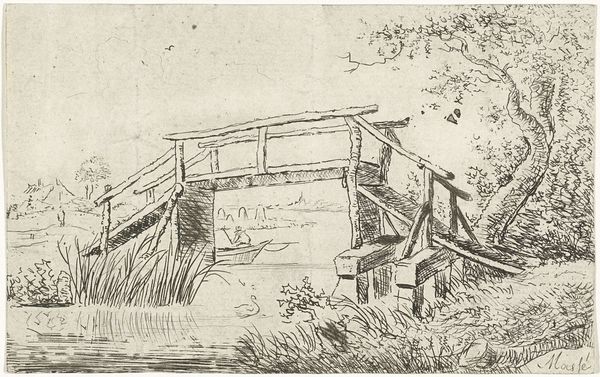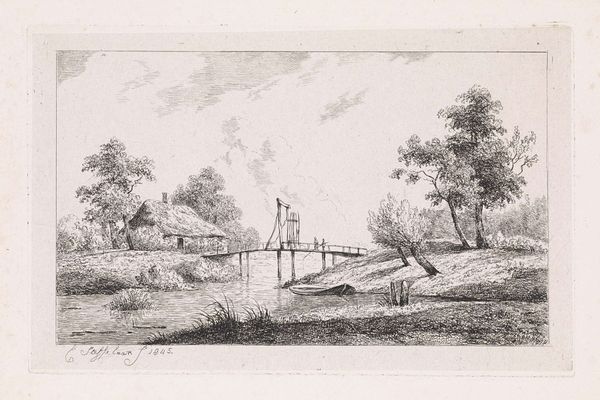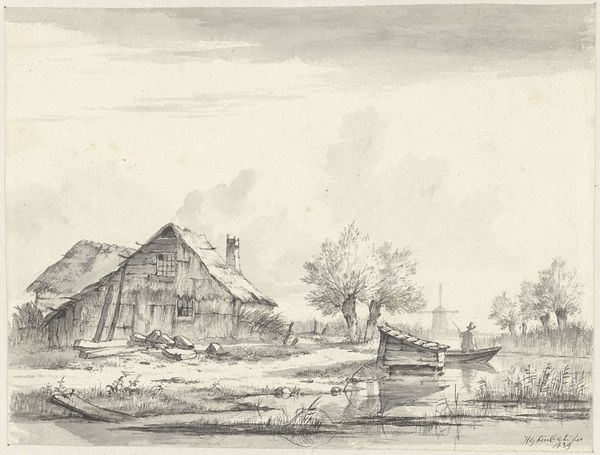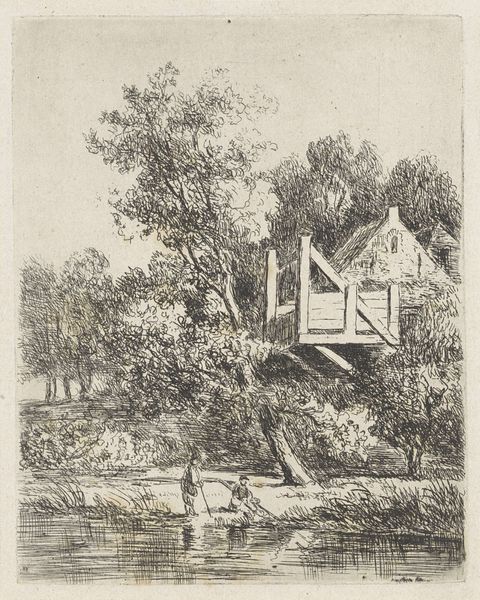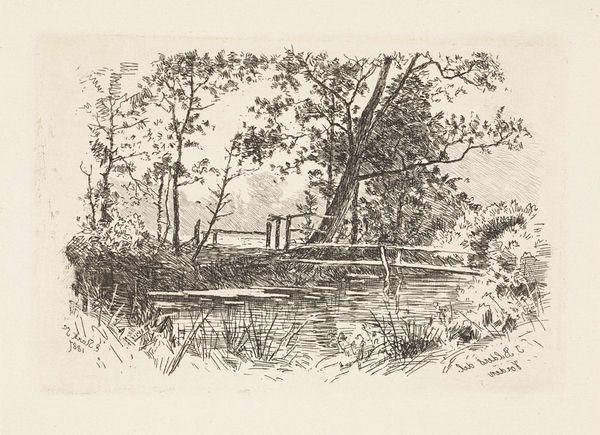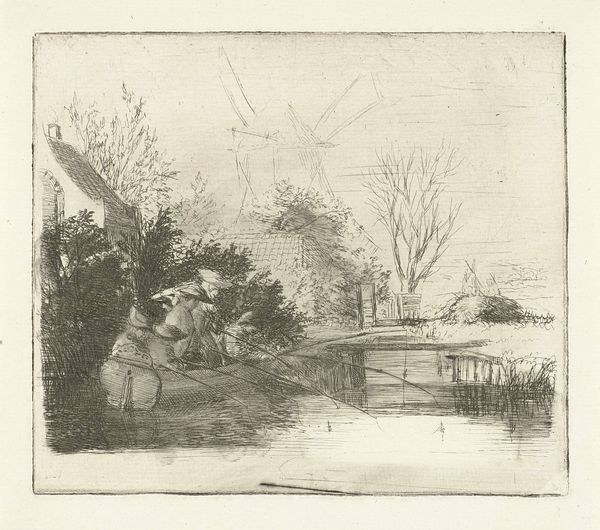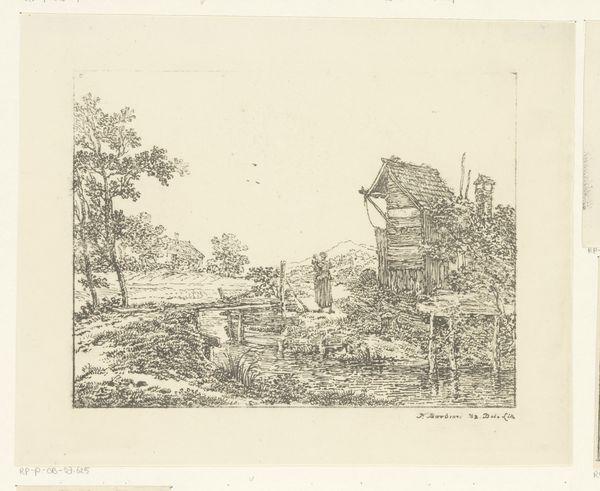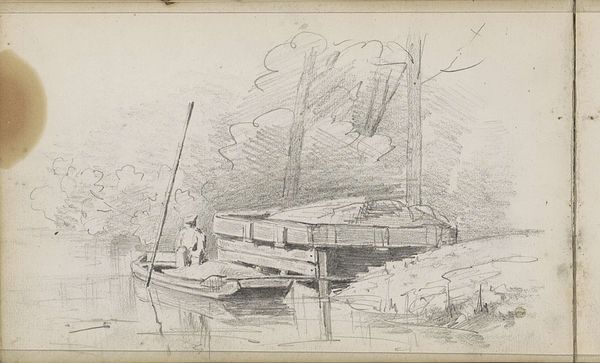
drawing, ink
#
drawing
#
landscape
#
ink
#
romanticism
Dimensions: height 102 mm, width 135 mm
Copyright: Rijks Museum: Open Domain
Editor: Gerrit Lamberts’ drawing, "Stairway to the Water," made sometime between 1810 and 1850, shows a simple waterside scene rendered in ink. It's at the Rijksmuseum. The wispy lines give it an almost dreamlike quality, don’t you think? How would you interpret the feeling this work evokes? Curator: Dreamlike is spot on. To me, this drawing whispers of quiet moments, of solitary figures lost in thought, perhaps even a hint of melancholy, reflecting Romanticism’s fascination with nature's power and our emotional response to it. I’m immediately drawn to the solitary figure sitting by the shack, so unassuming. She’s the quiet soul of this landscape. It's more about atmosphere than precision. Do you get a sense of that intimacy, or does something else stand out for you? Editor: I definitely see that solitary mood, and the quick strokes enhance the stillness of the scene, but what's particularly striking is how Lambert manages to capture the light on the water. Curator: Ah, yes! Look how the light dances on the water's surface – a technique that draws us into the tranquility of the scene. Romanticism did adore that luminosity; it gave paintings a sense of the sublime. Lambert is not just depicting a scene; he is giving us the *feeling* of being there, standing on that rickety stairway to another world. What are your final thoughts on this "other world"? Editor: It makes me appreciate how simplicity in art can be so expressive. The details of the shack, figure and staircase come alive! Curator: Exactly! Now if we only had the means to dive into that lake. What a wondrous dive of reflection it would be...
Comments
No comments
Be the first to comment and join the conversation on the ultimate creative platform.
